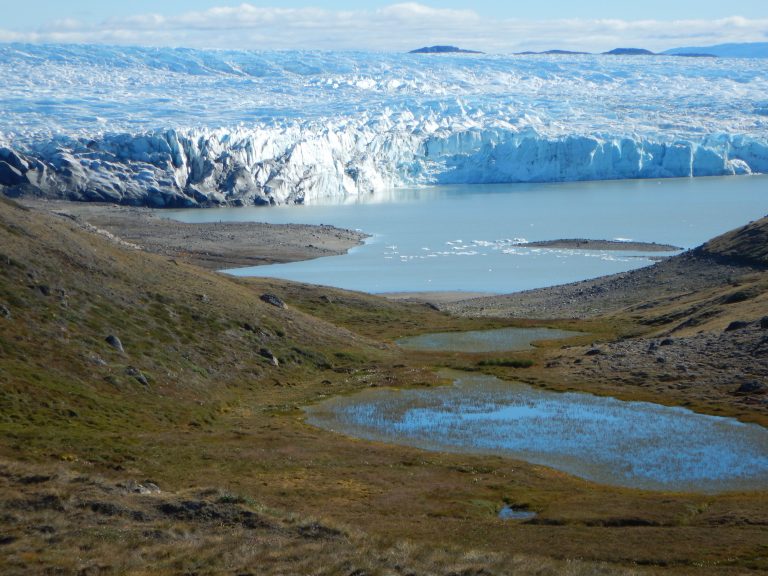
What Greenland’s Streams Tell Us About Climate Change
UF researchers awarded $2.2 million for a multi-year study
As global temperatures rise, scientists are still discovering the impact that changes in climate will have on the world around us. These questions are particularly urgent in the Arctic, which is warming about three times faster than the rest of the planet.
To help predict the consequences of warming, a multidisciplinary team of researchers at UF are studying landscapes in Greenland that were exposed by retreating ice sheets. The streams found there, the researchers believe, have something to tell us about how the Earth changes as it cycles between glacial and non-glacial climates and how it may respond to future warming.
In August, their inquiry was awarded a $2.2 million grant from the National Science Foundation’s Office of Polar Programs. Led by principal investigator Jonathan Martin, Professor of Geological Sciences, the team also includes co-principal investigators Professor of Geological Sciences Ellen Martin, Associate Professor Brent Christner of IFAS’s Department of Microbiology and Cell Science, and Cynthia Barnett, Environmental Journalist-in-Residence for the College of Journalism and Communications and the Bob Graham Center. Senior Personnel includes Associate Professor of Biology Stuart McDaniel and Professor of Soil and Water Sciences James Jawitz and Professor of Forest Resources and Conservation Matthew Cohen in IFAS.
The research originated with a trip to Greenland in 2011 that Jonathan Martin says “failed miserably.” He and two graduate students had traveled to landscapes next to the edge of the Greenland ice sheet to sample water flowing from beneath the ice — which proved more difficult than expected.
“We were dropped by helicopter at our study site with the intent to sample springs for three weeks,” he said. “When we realized there were no accessible springs, we decided to switch the sampling plan to collecting water from two unique kinds of streams we found in the region.”
Some were fed by meltwater draining off the glaciers, while others were separated from the glacier meltwater and only drained snow and rainfall. Those initial samples showed the two types of stream had distinct compositions — as a result of how they reacted with their environment — and they realized those differences might offer insights into feedbacks between climate change and the waning and waxing of glaciers.
Two primary differences in the stream waters have to do with the amount of nutrients they deliver to the ocean and the greenhouse gases they contain and exchange with the atmosphere. Understanding what processes control these differences and how the differences affect the surrounding environment and climate will help predict how global warming and the linked increased melting will impact Arctic ecosystems and societies.

Over the course of two “melt seasons,” roughly from mid-May to mid-September, the researchers will sample stream water and monitor compositions of these streams while collecting other data including weather observations, stream flow rates, and the distribution and vitality of plants and microbes.
The group isn’t only interested in discovering the impact — they also want to convey the information in an accessible way to those most affected by it. To do so, they are collaborating with colleagues in Greenland to develop an “environmental civics” plan that will create environmental science curricula for Greenlandic high school students and educational programs for tourists visiting their field sites.
The NSF grant adds to nearly a decade’s worth of funding totaling more than $3.5 million for research into these questions. The inquiry began in 2011 with a Faculty Enhancement Opportunity to Jonathan Martin, followed by one for Ellen Martin in 2012. The project has received three NSF grants, a National Geographic Society grant, and funding from INTERACT, a European Union-backed agency supporting Arctic research.


